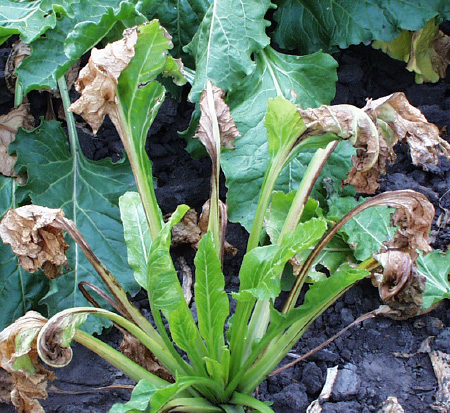Crop rotation may reduce inoculum buildup in the soil, but this practice is unreliable because F. oxysporum f. sp. betae has a wide host range and chlamydospores survive for many years. Movement of infested soil on contaminated field equipment should be avoided to prevent its spread to noninfested fields.
No fungicide that provides effective disease control is available. Growers who have fields with a history of the disease should plant Fusarium yellows-resistant varieties.
Photo credits
Figures provided by C. A. Bradley, M. F. R. Khan, and R. Nelson.
Selected References
Duffus, J. E. and Ruppel, E. G. 1993. Diseases. Pages 346-427 In: The sugar beet crop. D. A. Cooke and R. K. Scott (Eds.) Chapman and Hall, London.
Franc, G. D., Harveson, R. M., Kerr, E. D. and Jacobsen, B. J. 2001. Disease management. Page 131-160 In: Sugarbeet Production Guide. Univ. Nebraska Coop. Extension EC01-156.
Schneider, C. L. and Whitney, E. D. 1986. Fusarium Yellows. Page 18 In: Compendium of Beet Diseases and Insects. E. D. Whitney and
J. E. Duffus (Eds.). APS Press, St. Paul, MN.
March 2018






